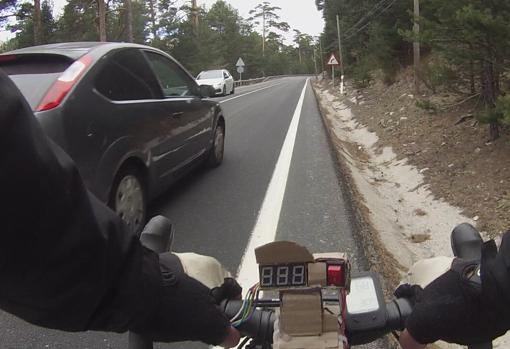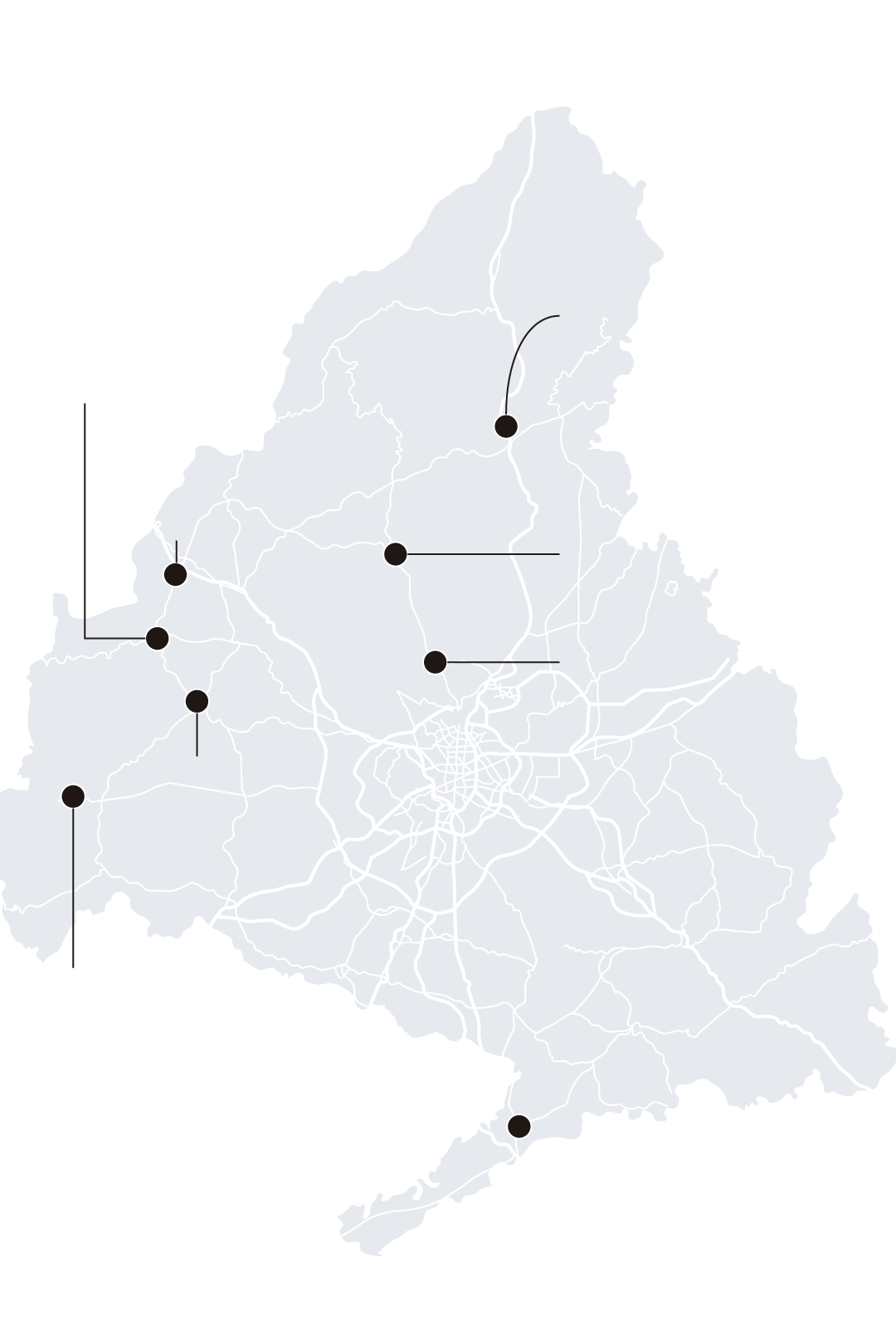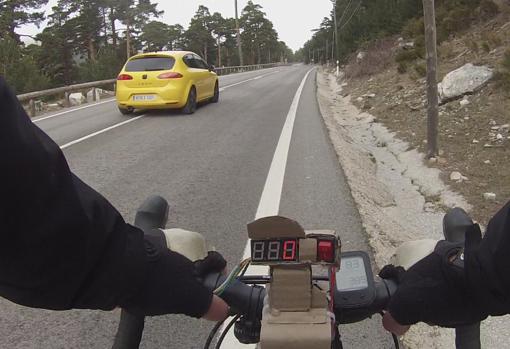Every weekend, Alejandro Martín meets with his friends from the Pata de Gallo rock. Days before, they agree on which areas of the Community of Madrid they will pedal: Navacerrada, Villanueva de la Cañada, Robledo de Chavela, Fresnedillas… Today they get together to make the route that connects Miraflores with the port of Canencia. Dressed in their shirts and helmets on, these amateur cyclists start riding shortly after dawn to take advantage of the best hours of the day. Pedal after pedal, they reach the end of this 65-kilometre stage. “In the last three years I have the feeling that there is more awareness, both on the part of cyclists and drivers of cars or trucks, but
there is still a lot to do”, affirms this fan.
The loss of bicycles (only in Madrid capital trips have multiplied by seventeen in the last decade, reaching at least 45.000 daily trips, according to municipal data) has helped the coexistence between drivers of motor vehicles and cyclists better . But the process of total acceptance on the road seems slow and complex. "A lot of awareness is still lacking," summarizes José Almagro, general secretary of the Madrid Cycling Federation (FMC), an organization that brings together 5.000 federated cyclists, "a small percentage of those that exist in Madrid."
"Madrid is not a safe community to ride a road bike, because the volume of motor vehicle traffic is enormous compared to that of other regions," analyzes the secretary, who focuses on the fact that this increases the risk of athletes . “There is a lack of information, both towards the cyclist and towards the driver, on how to circulate. There are drivers who do not respect and do not think that the cyclist is always the weakest, but there are also cyclists who do not know the regulations well and that increases the possibility of accidents, "said Almagro, who estimated that twenty federates have suffered some mishap with tourism in between in 2021.
 Overtaking a short distance, 50 centimeters, recorded by a cyclist – BG
Overtaking a short distance, 50 centimeters, recorded by a cyclist – BG
But they have not been the only ones. In November of last year, a 48-year-old man who was driving his motorcycle on the M-509 lost his life when he was hit by a bus; in September, he was one of 71 who died after a crash at a roundabout in Parla, and the same thing happened in July on the M-113, at the height of Daganzo de Arriba, in a new road tragedy in which a 40-year-old man, who died from the injuries they suffered. His are the latest cyclist accidents with fatalities that occurred in the Community of Madrid, which make up the national list for 2021, a year that closed with 31 deaths.
Infrastructure
In the case of the shocks suffered by the federates, fortunately, there have been no deaths. "We have no record," confirmed Almagro. So that the number does not increase, from the FMC they ask for more information campaigns, signage and investment in infrastructure. “In the Sierra de Guadarrama, where there is a higher density of cyclists, drivers are used to meeting them and know that they have to wait, brake or they can step on the continuous line to overtake if no car is coming. The implanted signage has helped that, because it feels that the space is shared”, he explained.

conflict points
for road cyclists
Lack of signs and poor condition of the asphalt at the exit from San Lorenzo del Escorial to the M-505 towards Ávila
M-608 between Guadalix de la Sierra and Venturada in both directions due to high speed vehicles and poor condition of the hard shoulder
M-600 from km 1 to km 23 problems in loss and loss of signaling
M-607 between Colmenar Viejo and Cerceda in both directions due to high speed vehicles and poor condition of the hard shoulder
Entrance to the M-607 bike lane from C/Ntra. Mrs. From Valverde to Hospital R. Lafora
M-600 between Valdemorillo and El Escorial through areas with large narrowings on the hard shoulder
M-501 in the section between Navas del Rey and San Martín de Valdeiglesias, in both directions
M-305 Poor condition of shoulders at the exit and entrance to Aranjuez
Source Regional Federation of Cyclists / ABC

conflict points
for cyclists
of road
Entrance to the M-607 bike lane from C/Ntra. Mrs. From Valverde to Hospital R. Lafora
M-501 in the section between Navas del Rey and San Martín de Valdeiglesias, in both directions
M-607 between Colmenar Viejo and Cerceda in both directions due to high speed vehicles and poor condition of the hard shoulder
M-608 between Guadalix de la Sierra and Venturada in both directions due to high speed vehicles and poor condition of the hard shoulder
M-305 Poor condition of shoulders at the exit and entrance to Aranjuez
M-600 between Valdemorillo and El Escorial through areas with large narrowings on the hard shoulder
Lack of signs and poor condition of the asphalt at the exit from San Lorenzo del Escorial to the M-505 towards Ávila
M-600 from km 1 to km 23 problems in loss and loss of signaling
Source Regional Federation of Cyclists / ABC
In the Community of Madrid there are currently two bicycle lanes segregated from cars, which reduces "dangerousness": one on the M-607 from Madrid to Soto del Real, and another in San Martín de la Vega. “The further you get from the M-40 or M-50, the safer the roads are for cyclists. That each radial road had its own bike lane would be ideal, ”he ditches.
North and south
He coincides with Javier Fernández, director of the Cycling Training club, with more than 140 licensees. “That section of the M-607 is like the M-30 for cyclists, on a weekend there are thousands and thousands. This is the ideal profile of totally safe routes”, says the man, a fan since he was eight years old, who differentiates between the scenario that comes in the north of the region and the south. “In the Sierra area, drivers are very respectful, there are fewer and fewer who see us as an enemy. But in the southern zone there is less awareness, they insult more and sometimes brush past each other,” explained Fernández, who stated that his is “just another vehicle.”
“Signage is basic, but so are the campaigns. I am convinced that, even if they are harsh, if some announcement from the DGT put the focus on cyclists, people would take us more into account. The data on the use of bicycles has skyrocketed and, if every driver thought that a loved one could ride one, there would be more respect”, emphasizes the sports director.
The good orography and the weather are two of the strong points of the Community of Madrid for this practice, although there are black areas detected by the FMC due to the poor condition of the shoulders, lack of signage, poor condition of the asphalt in sections of the M -505, reflectors installed on the M-600 or high-speed cars between Colmenar and Cerceda.
 Example of a “perfect” overtaking, 2,2 meters distance – BG
Example of a “perfect” overtaking, 2,2 meters distance – BG
"Of 59 overtaking, 27% of the drivers did it at less than a meter and a half," said Baldo, an amateur cyclist who last weekend recorded his ascent to Navacerrada to be able to analyze the distance with which he passed each mark what it came across. “Sometimes, it is scary because the risk is real, they pass less than a meter. There are other times that they go the right distance but very fast”, explained this amateur cyclist who dedicated his weekends to recovering the roads of the Sierra Norte on this two-wheeled means of transport.
The urban cyclist who, at the stroke of a pedal, travels the streets of the capital runs differently. According to data from the Madrid City Council, no person on a bicycle lost their life last year, despite the fact that they recorded 303 falls, 110 reaches (accidents that occurred when a bicycle was hit from behind) and 326 collisions. Of these, only 36 people needed hospitalization for more than 24 hours, 126 were in the hospital for less than a day and 254 received health care at the accident site.
Right Lane
As a difference, the Mobility ordinance of the capital recognizes that cyclists must occupy the center of the right lane and not the shoulder. “There are those who tell you that you stick to the right, but no, that is the place to go, although they usually do not know it. It is the great unknown measure and it is fundamental to go safely”, says Baldo.
Iván Villarrubia, cycling mobility consultant, advised that the accident figures remain similar to those of six years ago. "Serious accidents are also down," he says. “The acceptance has been very noticeable. Inside the M-30 it is more and more frequent to see bicycles; outside, it is less civic, there are people who ask you to step aside, ”he asserts. Although the capital also has flaws: traffic jams and lack of parking. "Not having secure parking for bikes at street level is being a deterrent," Villarrubia concluded. Despite this, the tires and tires will continue to roll on the asphalt.
